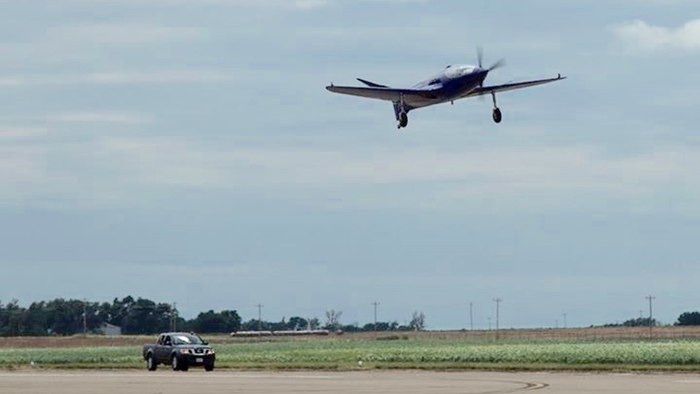When you hear the name Bugatti, what do you think of? Like most people, you’re thinking of the cars; the Type 35 Grand Prix cars for those with an eye to motorsport and historic cars, or perhaps the modern revivals in the shape of the EB110 and the Veyron. Few, if any, would think of record aircraft.
It was back in the late 1930’s (around 1937/8) that Ettore Bugatti started work on a racer to compete in the Deutsch de la Meurthe Cup Race – what came about from this was the Bugatti 100P – it is unique, for one it is the only aircraft the Bugatti company built, but it is one of the earliest examples of a technology demonstrator. The project had to be put on hold when the Second World War began – and when the German Army advanced in to Paris in June 1940, Ettore had removed the aircraft and relevant drawings rather than let the technology fall into their hands. Anecdotal evidence suggests that the German minister for production and others were aware of the aircraft.
The aircraft is considered an Art Deco masterpiece – it was designed to set records at speeds above 450 mph. As seen on the images in this article, the aircraft possessed several unique features – things that we might not consider so unique today – but that were definitely ahead of the time. The aircraft had forward-swept wings, the two 8 cylinder Bugatti Type 50 engines were slant-mounted and located behind the cockpit, it had two contra-rotating propellers. Other innovative features include making use of the so-called ‘Meredith effect’ – the idea of pulling cooling air through high-pressure areas and ducting it through a radiator in the right way will cause an expansion effect – this will produce negative drag effects. It even had an automated flight control system – an analog computer system essentially – that was there to prevent pilot error.
After the war, this beautiful aircraft was mostly forgotten until American enthusiasts bought it and, intending to restore it – returned with it to the USA. It was not until it ended up in the US Experimental Aircraft Association’s Museum in Oshkosk, Wisconsin. It was restored and put on display – however, its engine less shell (the engines were sold prior to 1971 when it’s restoration began), is just too fragile to be considered airworthy.
Until recently, the Bugatti was one of the most interesting “what if” stories within aviation. Scotty Wilson, a former Air Force fighter pilot, was determined that it wouldn’t remain a pipe dream – he was determined to build and eventually fly a faithful replica of the Bugatti. People joined his Le Rêve Bleu team (The Blue Dream) from all over the world and the replica airframe was completed.
Preston Lerner from Air and Space Magazine went to see the replica in February 2014, he said;
“I turn and behold an object painted a shade of royal blue so deep it’s almost purple. The airplane is magnificent, a stunning combination of old school and new wave, a V-tail Beech Bonanza crossed with the X Fighter flown by Luke Skywalker, an antique that seems like it somehow came from the future. All I can think is Wow.”
On a wall in the hanger, hangs a photograph of Louis de Monge, the aeronautical engineer that was primarily responsible for the design of the Bugatti – he explored avenues far from the level of his peers at the time – interested in automatic flight control systems and flying wings. It is such a shame that De Monge left no written record of his thinking that went into such a different concept.
The replica is by no means a perfect copy, the wood is a composite called DuraKore, fiberglass replaces doped fabric and the magnesium is replaced to reduce cost and flammability. The most noticeable difference is the Suzuki Hayabusa motorcycle motors – the beautiful blown Bugatti straight eights are essentially unobtainable.
The replica’s first test flight was in August 2015, where it sustained damage on landing – having reached 100 feet high to check the power and control responsiveness.
Following work to repair the damage, the second flight took place in October 2015 where it made a complete circuit of the traffic pattern at the Clinton-Sherman Airport.
We look forward to seeing the replica take to the skies again.
Sources:



